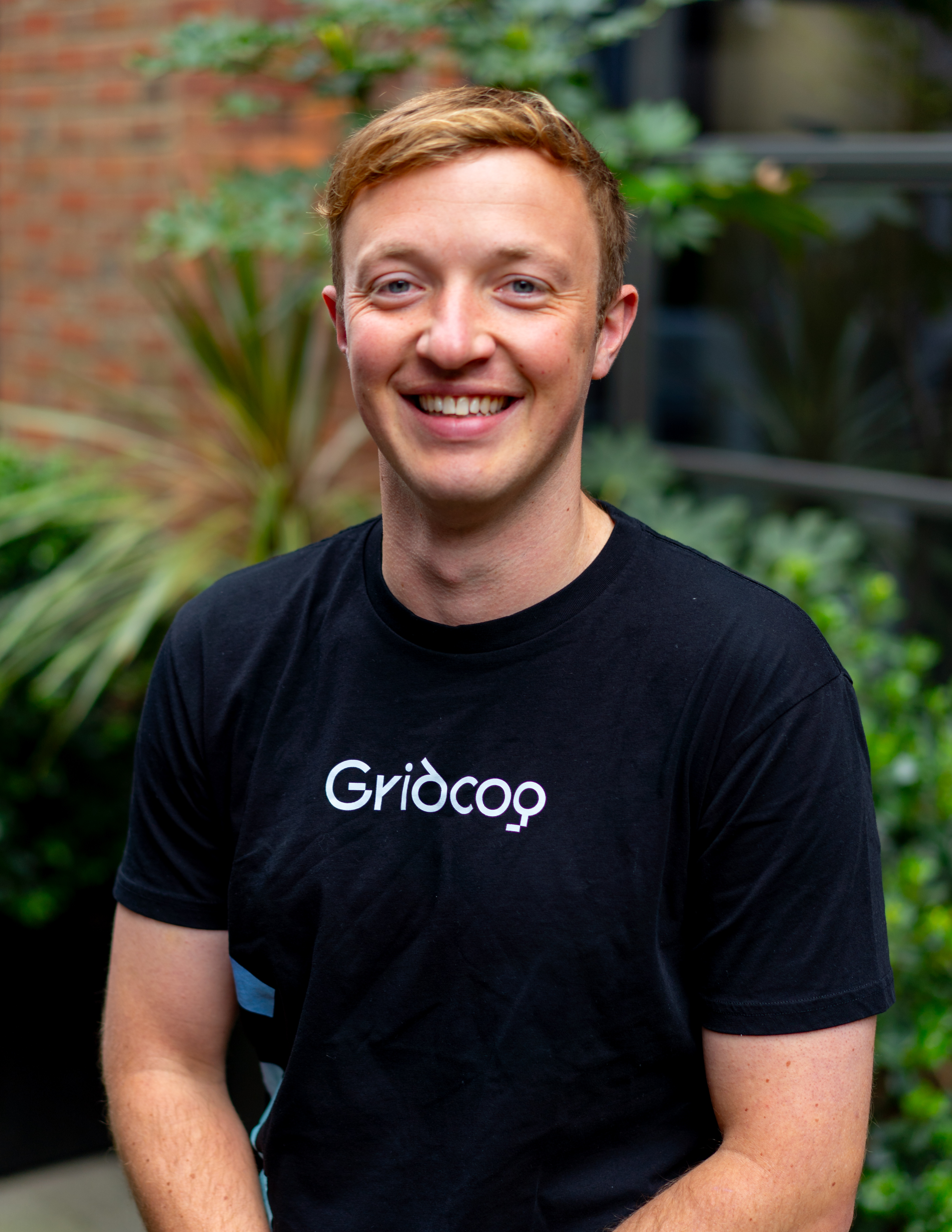Meet our Flexible Markets Lead, Alex Leemon!

We’re thrilled to welcome Flexible Markets Lead Alex Leemon to the Gridcognition leadership team.
After a decade working for some of Australia’s leading energy sector innovators, Alex has joined Gridcognition to help our product team and customers maximise the market value of the projects being simulated and optimised in our software platform.
While Alex originally has a hard engineering background, conducting power station condition assessments, he is now firmly an energy markets and flexibility services specialist focusing on demand side aggregation, frequency control services, battery storage systems, and demand response.
Prior to joining Gridcognition he was a core member of the team that brought the first aggregated demand response-based frequency control portfolio to Australia’s National Electricity Market (NEM); and he’s managed demand response portfolios in all mainland states and across every type of demand response possible in the NEM; and, he’s a self-confessed “completely tragic NEM nerd”.
“I’ve spent hundreds of hours analysing customer and market data, reading the National Electricity Rules and poring over AEMO procedures. I’ve written my own package for downloading NEM data in R, and I think I’ve looked inside of every single table available in the MMS data model.”
Read on to learn more about “Energy Nerd” Alex Leemon.
PS: He’s a good follow on LinkedIn.
Have you Met … Alex Leemon
What got you into the energy space?
I have to admit that I fell into energy by accident – I trained as a materials engineer and there are relatively few jobs in that field. I ended up working for a small consultancy that operated primarily in the power sector. I spent a lot of time crawling around coal-fired and gas power stations!
But I truly became passionate about energy when I switched to the ‘market side’; I started working for a ‘Demand Response Aggregator’. Demand Response is this idea that customers who are flexible about when and how they consume electricity can be monetarily rewarded. It’s somewhat of a paradigm shift from the traditional view of the supply and demand sides of the electricity grid and the limited chance for positive interactions. Demand response (flexible loads) are a win-win for customers and the broader electricity grid.
Ever since then I’ve been worked for energy companies focussed on improving the customer experience and unlocking new modes of interaction with the electricity grid. The common thread that links these companies is the desire to see a better, cleaner and more customer-centric future of the energy sector.
What attracted you to work with Gridcognition?
The chance to work for a small (but rapidly growing!) tech company, in energy, in Australia and work from wherever I can plug a laptop in? Where do I sign!
On top of that the chance to work for a company that is values-driven is also really important to me. Anthropogenic climate change is (quite literally) an existential crisis and our governments seem largely frozen in their ability to respond appropriately or set meaningful policy agendas. So working for a company which has a clear mission and goal towards a better, cleaner future is not only important, but helps mitigate the overwhelming feelings fear just slightly.
What’s the most interesting project you’ve seen modelled so far?
I don’t think I can name just one! We’ve now got all kinds of projects that have been modelled in the software – microgrids looking to switch away from diesel generators (to a combination of solar, wind and batteries), commercial and industrial customers looking to model how flexible load could reduce their costs or generate revenue and retailers doing ‘virtual tariff trials’ where they can see how small tweaks to tariff rates or times have significant changes to how customer assets respond.
One of the coolest things about the software is this ability to just play around in a virtual sandbox and imagine what the future of energy might or could look like. I get excited every time a new customer comes along with a different problem or a different way of approaching a problem that otherwise felt familiar.
What do you like to do outside of work?
I’m very into cycling. There’s a running joke amongst my friends about the number of push bikes I own (compared to the relatively limited time I get to ride these days). But by complete happenstance I took delivery of a brand new steed in almost Gridcognition colours two weeks after I started here! Chuffed is an understatement.








